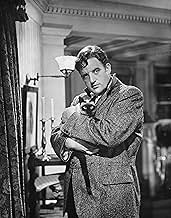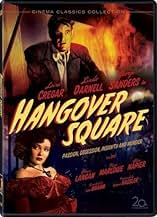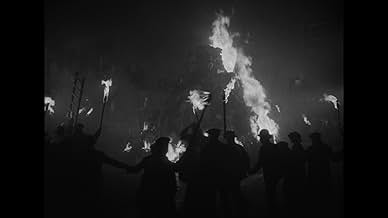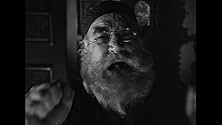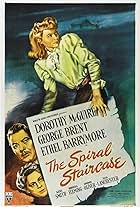IMDb RATING
7.3/10
4.3K
YOUR RATING
A promising classical musician finds his life poisoned by a music hall dancer -- and by the strange gaps in his memory.A promising classical musician finds his life poisoned by a music hall dancer -- and by the strange gaps in his memory.A promising classical musician finds his life poisoned by a music hall dancer -- and by the strange gaps in his memory.
- Director
- Writers
- Stars
- Awards
- 2 wins total
Harry Allen
- Pot Man
- (uncredited)
Radford Allen
- Boy
- (uncredited)
Jimmy Aubrey
- Drunk
- (uncredited)
J.W. Austin
- Det. Insp. King
- (uncredited)
Brandon Beach
- Concertgoer
- (uncredited)
Wilson Benge
- Waiter
- (uncredited)
Frank Benson
- Newsman
- (uncredited)
Arthur Berkeley
- Pub Patron
- (uncredited)
Ted Billings
- Pub Patron
- (uncredited)
Lulu Mae Bohrman
- Concertgoer
- (uncredited)
Clifford Brooke
- Gas Company Watchman
- (uncredited)
Bob Burns
- Concertgoer
- (uncredited)
- Director
- Writers
- All cast & crew
- Production, box office & more at IMDbPro
Featured reviews
Well worth watching, if you can find it. Cregar is excellent as the concert pianist tortured by obsession with a woman, and what it leads to. Moody, urgent (all the more so in black and white), with mounting suspense and tension. Lush Bernard Hermann score that expresses his anguish. Bonfire scene is gripping.
Though it's virtually impossible to find a copy of this buried treasure, it's worth a fair bit of digging. (The film is available on tape only, in mediocre print condition, and carried by only a handful of rental stores in the country.) It's not a brilliant film, but it has some virtuoso camera work that one would never expect to find in a filmi of its type. (Watch for the camera shot in the first seconds of the film that swings quickly up from a crowded street, through a window, and into a tight
closeup of the face of a man about to be killed - very impressive.) This is the type of film one can imagine Martin Scorsese taking an interest in - a skillful, craftsmanlike film overlooked by all but a few film buffs. The performances as well, especially Laird Cregar's, are terrific.
closeup of the face of a man about to be killed - very impressive.) This is the type of film one can imagine Martin Scorsese taking an interest in - a skillful, craftsmanlike film overlooked by all but a few film buffs. The performances as well, especially Laird Cregar's, are terrific.
In this variation on the Jekyll and Hyde story, a composer has sporadic episodes where his subconscious takes over and he has no recollections of his actions during these lapses when he comes to. This film reunites Cregar and Sanders with director Brahm from "The Lodger" the previous year, and, like the earlier film, it is visually opulent but the story is less than compelling. Cregar gives perhaps his best performance in this, his final film before his untimely death at age 31 just as he was coming into his own. Darnell, who would also die young, is a sensuous presence as the object of his obsession. Herrmann provides an impressive score, including a piano concerto used in the finale.
Laird Cregar stars as George Harvey Bone, a turn of the 20th century London composer. He's busy working on a concerto, but gets distracted by a chanteuse named Netta Longdon (Linda Darnell). He gets his heart broken by this self-serving lady, who's only interested in what he can do for her. Meanwhile, he keeps suffering prolonged "episodes" - brought on by loud, discordant noises - and he can't remember what he does or where he goes during these periods. As it turns out, he becomes impulsively murderous.
"Hangover Square", named for the London address at which Bone resides, was scripted by Barre Lyndon, based on a novel by Patrick Hamilton. Sadly, it would turn out to be the final picture for Cregar, who suffered the ill effects of an attempted crash diet. But he certainly goes out in style, creating a vivid character who's far more sympathetic than the character he played for director John Brahm in "The Lodger". While the other cast members are good, this largely remains his show - one that his character sees through to the bitter end.
Darnell and the equally lovely Faye Marlowe are intoxicating as the women in his life. One does feel disgruntled on Bones' behalf when Netta reveals her true colours. George Sanders is his typical classy, dapper self as an analyst working for Scotland Yard. Glenn Langan is amusingly smarmy as Bones' rival for Nettas' affections. And Alan Napier, Michael Dyne, and Frederic Worlock lend able support in various other roles.
While the excellent black & white cinematography by Joseph LaShelle is definitely a key element, the film works best as a marriage of image and music. Bernard Herrmann is one of the most valuable assets that the film can boast, as his lush score & concerto provide the perfect accompaniment for these melodramatic goings-on.
One clever highlight: Bone taking advantage of a fiery Guy Fawkes celebration night.
Eight out of 10.
"Hangover Square", named for the London address at which Bone resides, was scripted by Barre Lyndon, based on a novel by Patrick Hamilton. Sadly, it would turn out to be the final picture for Cregar, who suffered the ill effects of an attempted crash diet. But he certainly goes out in style, creating a vivid character who's far more sympathetic than the character he played for director John Brahm in "The Lodger". While the other cast members are good, this largely remains his show - one that his character sees through to the bitter end.
Darnell and the equally lovely Faye Marlowe are intoxicating as the women in his life. One does feel disgruntled on Bones' behalf when Netta reveals her true colours. George Sanders is his typical classy, dapper self as an analyst working for Scotland Yard. Glenn Langan is amusingly smarmy as Bones' rival for Nettas' affections. And Alan Napier, Michael Dyne, and Frederic Worlock lend able support in various other roles.
While the excellent black & white cinematography by Joseph LaShelle is definitely a key element, the film works best as a marriage of image and music. Bernard Herrmann is one of the most valuable assets that the film can boast, as his lush score & concerto provide the perfect accompaniment for these melodramatic goings-on.
One clever highlight: Bone taking advantage of a fiery Guy Fawkes celebration night.
Eight out of 10.
My parents took me to see this when I was 8 & I had nightmares about it for a month or more - compounded by the knowledge that the lead, the great Laird Cregar died shortly after his appearance in it (of complications from dieting - at age 28!). The total immersion of this film into the clinical madness of a composer who cracks up when he hears discordant sounds & the greed & opportunism of his paramour give it a real nasty Edwardian gothic mood. There are scenes of creepiness here that seem almost the prototypes for Hitchcock classics like Psycho & Vertigo. (Bernard Hermann wrote the composer's scores as well as the background music). But it's also a great exercise on good vs evil, apollo vs dionysius & above all high art vs low art. The 2 main leads, Cregar & Sanders, the director & writer were involved in the making of The Lodger - a Jack the Ripper film - the year before.
Storyline
Did you know
- TriviaIn the book "A Heart at Fire's Center: The Life and Music of Bernard Herrmann," director John Brahm said this about the concerto scene: "For a long time, I had been dissatisfied with the photography of music in films. Musicians themselves are uninteresting; it is what they play that should be photographed. I myself could not read a note of music, but when Herrmann came and saw the finished film he could not believe it. I had photographed his music."
- GoofsThe title of Patrick Hamilton's novel, 'Hangover Square', is a play on words based on 'Hanover Square'. It is not meant to be Bone's actual address as it is in the film version, where a street sign marked 'Hangover Square' is seen.
- Quotes
[first title card]
Title Card: This is the story of George Harvey Bone who resided at number 12, Hangover Square, London, S.W. in the early part of the Twentieth Century. The British Catalogue of Music lists him as a Distinguished Composer~~~
- Crazy creditsOpening credits: This is the story of George Harvey Bone who resided at number 12, Hangover Square, London, S.W. in the early part of the Twentieth Century. The British Catalogue of Music lists him as a Distinguished Composer~~~
- ConnectionsFeatured in Biography: Linda Darnell: Hollywood's Fallen Angel (1999)
- SoundtracksHave You Seen Joe?
(uncredited)
Music by Lionel Newman
Lyrics by Charles Henderson
Performed by Kay St. Germain Wells
[Netta (Linda Darnell) sings the song at the bar hall in her opening performance]
Details
- Release date
- Country of origin
- Languages
- Also known as
- Mörkrets ängel
- Filming locations
- Production company
- See more company credits at IMDbPro
Box office
- Budget
- $1,154,000 (estimated)
- Runtime1 hour 17 minutes
- Color
- Aspect ratio
- 1.37 : 1
Contribute to this page
Suggest an edit or add missing content



